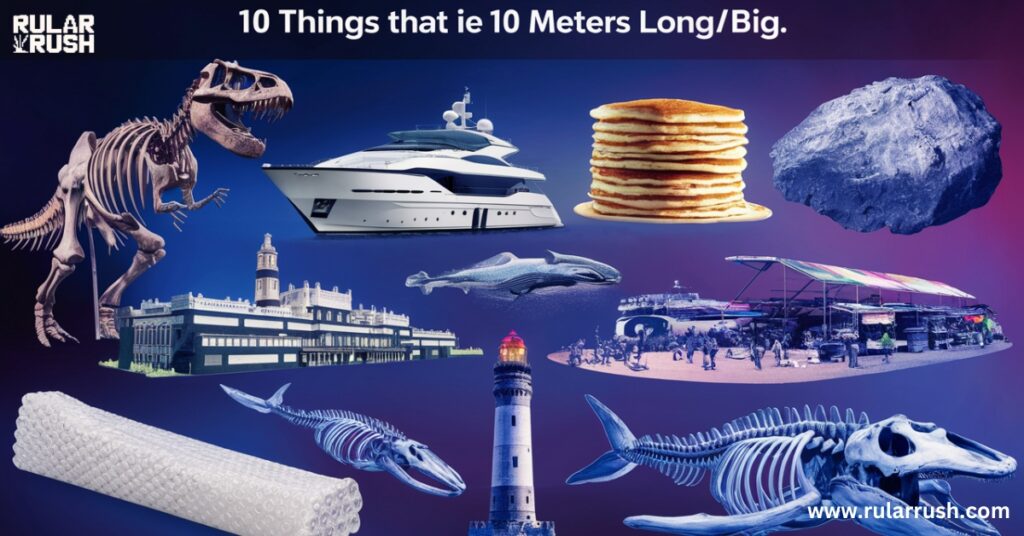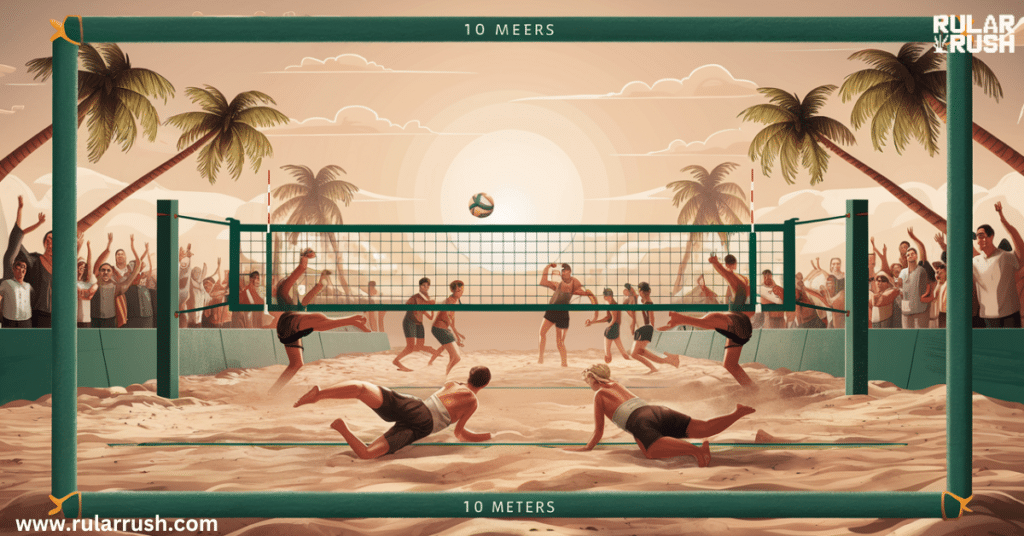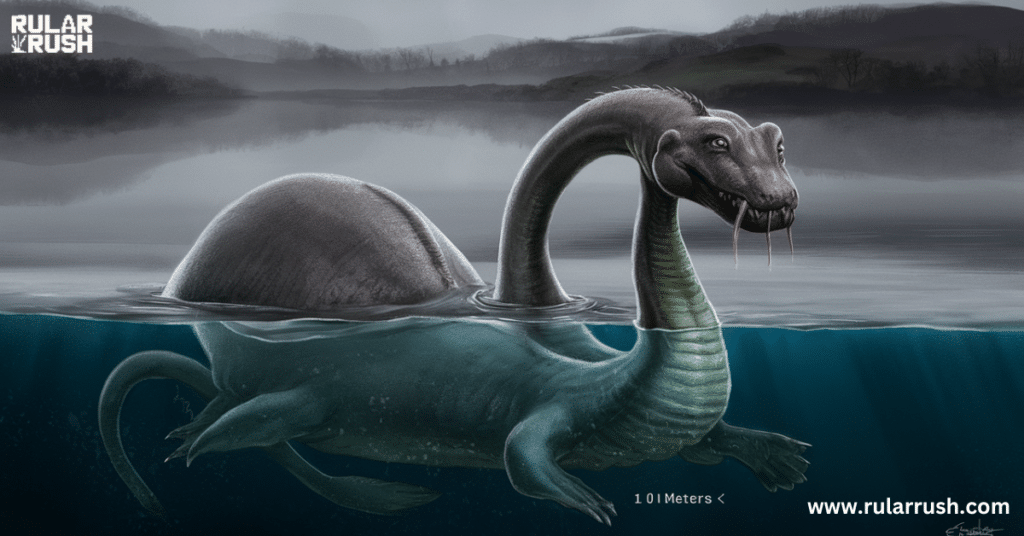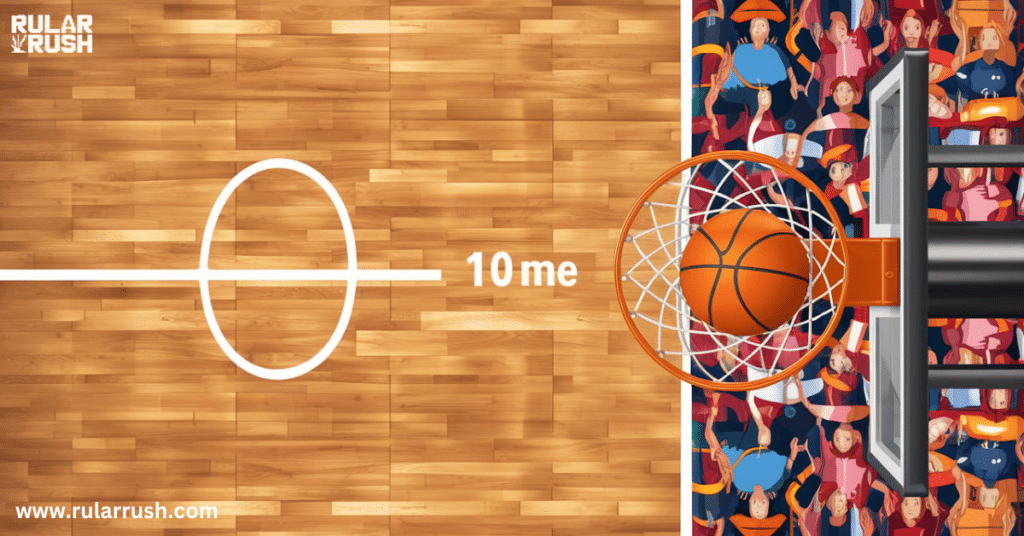
Imagine a world where every 10 meters held a secret waiting to be unveiled. From the towering heights of urban jungles to the mysterious depths of ancient lochs, this seemingly ordinary measurement weaves an extraordinary tapestry through our lives. But how often do we stop to truly appreciate the power of 10 meters? In this eye-opening exploration, we’ll uncover 10 surprisingly common things that measure up to 10 meters, transforming your perception of this ubiquitous length.
Prepare to embark on a thrilling journey that spans from the awe-inspiring Tyrannosaurus Rex to the humble city bus, from Olympic diving platforms to the elusive Loch Ness Monster. By the time we’re done, you’ll never look at a telephone pole or a bowling lane the same way again. Get ready to see the world through a 10-meter lens, as we dive deep into the hidden wonders that surround us every day.
Whether you’re visualizing 10 meters for a DIY project or simply curious about the world around you, this guide will forever change how you understand and appreciate this fundamental measurement.
Understanding 10 Meters: More Than Just a Number
Before we dive into our list of 10-meter objects and distances, it’s crucial to understand what 10 meters actually means in various contexts. In the metric system, which is used by most countries worldwide, 10 meters is a fundamental unit of length. Let’s break it down:
- 10 meters = 1,000 centimeters
- 10 meters = 0.01 kilometers
- 10 meters ≈ 32.8084 feet
- 10 meters ≈ 10.9361 yards
- 10 meters = 393.7008 inches
For those more familiar with imperial measurements, visualizing 10 meters can be tricky. Here’s a quick comparison table to help:
| Metric | Imperial |
|---|---|
| 10 meters | 32.8084 feet |
| 10 meters | 10.9361 yards |
| 10 meters | 393.7008 inches |
To put this in human terms, the average adult is about 1.7 meters (5 feet 7 inches) tall. So, 10 meters would be roughly the height of 5.8 average adults stacked on top of each other!
“Understanding measurements in relation to the human body helps us internalize abstract concepts.” – Dr. Maria Montessori, Education Theorist
Now that we have a baseline understanding, let’s explore our list of 10 surprisingly common things that measure up to 10 meters.
10 Intriguing Objects and Distances Measuring 10 Meters
The Towering Telephone Pole

Telephone poles, those ubiquitous sentinels of our urban and suburban landscapes, typically stand at a height of 10 meters (32.8 feet). This height isn’t arbitrary – it’s carefully calculated to balance visibility, safety, and functionality.
Historical context:
The first telephone poles were installed in 1876, shortly after Alexander Graham Bell patented the telephone. Their height was determined by the need to keep wires out of reach and avoid interference with horse-drawn carriages, which were the primary mode of transportation at the time.
These 10-meter giants serve multiple purposes in our modern world:
- Supporting telephone lines
- Carrying electrical wires
- Hosting transformers and other equipment
- Providing mounting points for street lights
- Serving as bases for cellular network antennas
Fun fact: In some countries, telephone poles are called “telegraph poles,” harkening back to their original use in the 19th century.
The 10-meter height of telephone poles is crucial for several reasons:
- Safety: It keeps potentially dangerous electrical equipment out of reach.
- Clearance: It allows for vehicles to pass underneath without risk of contact.
- Span: It provides enough height for wires to span long distances without sagging too low.
- Visibility: It makes the poles easy to spot, reducing the risk of accidents.
The next time you’re out for a walk, take a moment to appreciate these 10-meter marvels that keep our world connected. They’re a testament to how we’ve adapted our infrastructure to human scale while meeting technological needs.
A Standard City Bus

City buses, the workhorses of urban public transportation, often measure right around 10 meters (32.8 feet) in length. This size has been optimized over decades to balance passenger capacity with maneuverability in tight city streets.
Let’s break down why 10 meters is the sweet spot for city buses:
- Passenger capacity: A 10-meter bus can typically seat 35-40 passengers comfortably, with room for additional standing passengers during peak hours.
- Maneuverability: Long enough to carry many passengers, but short enough to navigate urban corners and fit into standard bus stops.
- Efficiency: Balances fuel consumption with passenger load, making it economically viable for transit authorities.
- Accessibility: Allows for features like low floors and wheelchair ramps without compromising seating capacity.
“The 10-meter bus is a triumph of urban design, balancing the needs of passengers, drivers, and city planners.” – Urban Transit Monthly
Case study: London’s Double-Decker Buses
London’s iconic red double-decker buses, specifically the New Routemaster model, measure 11.23 meters in length. This slight increase from our 10-meter standard allows for the double-decker design, accommodating up to 87 passengers. Despite being longer, these buses maintain maneuverability through careful engineering and design.
Bus length variations worldwide:
- Standard single-decker bus: 10-12 meters
- Articulated bus: 18 meters
- Bi-articulated bus: 25 meters
Next time you hop on a bus, remember you’re stepping into a carefully designed 10-meter (or so) mobile environment, optimized for urban transportation!
The Olympic Diving Platform

For thrill-seekers and Olympic athletes alike, the 10-meter diving platform represents the pinnacle of the sport. Standing at the edge of this platform, divers face a drop equivalent to a three-story building.
Key facts about 10-meter platform diving:
- It’s the highest of the Olympic diving events
- Divers reach speeds of up to 35 mph (56 km/h) during their descent
- The pool below must be at least 5 meters deep to safely accommodate these high-velocity dives
- Divers typically make contact with the water 3 seconds after leaving the platform
The 10-meter platform has been the stage for some of the most spectacular moments in Olympic history. From Greg Louganis’s perfect dives to more recent feats by champions like Chen Aisen, this 10-meter drop has captivated audiences worldwide.
Historical perspective:
The 10-meter platform dive was introduced as an Olympic event in the 1904 St. Louis Games. Since then, it has evolved into one of the most watched and respected events in competitive diving.
Physical and mental challenges:
Diving from a 10-meter platform requires immense physical skill and mental fortitude. Divers must:
- Overcome the natural fear of heights
- Execute complex maneuvers in less than 3 seconds
- Enter the water at the correct angle to prevent injury
- Demonstrate grace and control throughout the dive
“Standing on the 10-meter platform, you’re not just facing a dive, you’re facing yourself.” – Laura Wilkinson, Olympic gold medalist
The 10-meter platform serves as a powerful reminder of human courage and the pursuit of athletic excellence. It’s a testament to how we push the boundaries of what’s possible within the confines of a 10-meter drop.
Half a Bowling Lane

A standard bowling lane measures 60 feet from the foul line to the head pin. That’s 18.29 meters, making half a bowling lane almost exactly 10 meters. This 10-meter distance plays a crucial role in the game of bowling.
Bowling lane breakdown:
| Section | Length | Purpose |
|---|---|---|
| Approach | 15 feet (4.57 m) | Where bowlers take their steps |
| Lane | 60 feet (18.29 m) | The playing surface |
| Pin deck | 3 feet (0.91 m) | Where pins are set |
Understanding this 10-meter half-distance can help bowlers improve their game. It’s at this midpoint where many pros aim to have their ball start its hook, setting up the perfect strike.
The science of bowling:
The 10-meter distance from the foul line to the midpoint of the lane is crucial in the physics of bowling. Here’s why:
- Ball speed: Most bowlers release the ball at speeds between 16-24 mph. By the time the ball reaches the 10-meter mark, it has slowed due to friction with the lane.
- Oil patterns: Lanes are oiled in specific patterns, usually extending 37-42 feet. The 10-meter mark is where many oil patterns start to transition.
- Hook potential: As the ball loses speed and encounters less oil, it begins to hook more dramatically. Many bowlers aim to have their ball start hooking around the 10-meter mark for optimal pin impact.
Fun fact: The longest verified bowling alley in the world is in Inazawa, Japan, measuring 141.28 meters (463.43 feet) long. That’s equivalent to about 14 standard bowling lanes!
Whether you’re a casual bowler or a seasoned pro, understanding the 10-meter midpoint of a bowling lane can give you a new appreciation for the precision and strategy involved in this popular sport.
The Legendary Tyrannosaurus Rex

Stepping back in time about 66 million years, we encounter one of the most fearsome predators to ever walk the Earth – the Tyrannosaurus Rex. Recent studies suggest that an average T. Rex measured about 10 meters (32.8 feet) from snout to tail tip.
T. Rex facts:
- Height: 3.66 meters (12 feet) at the hips
- Weight: 8,870 kg (19,555 lbs)
- Bite force: Up to 35,000 newtons (7,868 lbs of force)
Imagine standing next to this 10-meter long behemoth! It’s no wonder the T. Rex has captured our imaginations for generations. From museum exhibits to blockbuster movies, the 10-meter length of the T. Rex continues to awe and inspire.
Evolutionary context:
The T. Rex’s 10-meter length was the result of millions of years of evolution. Here’s how it compares to some of its theropod relatives:
| Dinosaur | Length | Time period |
|---|---|---|
| Compsognathus | 1 meter | Late Jurassic |
| Velociraptor | 2 meters | Late Cretaceous |
| Allosaurus | 8.5 meters | Late Jurassic |
| Tyrannosaurus Rex | 10 meters | Late Cretaceous |
| Spinosaurus | 15 meters | Cretaceous |
The significance of size:
The T. Rex’s 10-meter length played a crucial role in its dominance of the late Cretaceous ecosystem:
- Prey range: Its size allowed it to take on very large prey, including other dinosaurs.
- Territorial range: A larger body size typically correlates with a larger home range, allowing T. Rex to dominate vast territories.
- Thermoregulation: The square-cube law suggests that larger animals retain heat better, potentially allowing T. Rex to maintain a more stable body temperature.
- Intimidation: The sheer size of T. Rex likely deterred other predators and intimidated prey.
“The T. Rex represents nature’s experiment with power and predation taken to its logical extreme.” – Dr. Stephen Brusatte, Paleontologist
The 10-meter T. Rex serves as a powerful reminder of the diverse forms life has taken throughout Earth’s history, and how size has played a crucial role in the evolution of species.
A Regulation Beach Volleyball Court’s Width

Beach volleyball, a sport that combines athleticism with sun and sand, is played on a court with a width of 10 meters (32.8 feet). This width is crucial to the game’s strategy and intensity.
Beach volleyball court dimensions:
- Width: 10 meters (32.8 feet)
- Length: 16 meters (52.5 feet)
- Net height: 2.43 meters (8 feet) for men, 2.24 meters (7 feet 4⅛ inches) for women
The 10-meter width creates a perfect balance:
- Wide enough to allow for strategic plays
- Narrow enough to keep the game fast-paced and exciting
- Optimized for two-person teams to cover effectively
Historical context:
Beach volleyball originated in the 1920s on the beaches of Santa Monica, California. The court dimensions have evolved over time, with the current 10-meter width becoming standard in international play in the 1990s.
Strategic implications of the 10-meter width:
- Serving: The 10-meter width allows for angled serves that can pull receivers out of position.
- Defensive positioning: Players must carefully balance court coverage within the 10-meter width.
- Attacking: The width provides enough space for varied attack angles while still allowing for effective blocks.
- Physical demands: The 10-meter width is optimized to challenge players’ agility and speed without being overwhelming for a two-person team.
Case study: Olympic Beach Volleyball
Beach volleyball became an Olympic sport in 1996. The standardized 10-meter court width has been crucial in establishing the sport’s identity and ensuring consistent play across international competitions.
“The 10-meter width of a beach volleyball court is like a chess board. It’s just enough space to create strategy, but small enough to demand split-second decisions.” – Kerri Walsh Jennings, Three-time Olympic gold medalist
Whether you’re watching Olympic-level competition or setting up a game on your local beach, remember that 10-meter width is key to the sport’s dynamics and the thrilling rallies that make beach volleyball so exciting to play and watch.
The Loch Ness Monster (According to Some Reports)

While its existence remains unproven, many reported sightings of the legendary Loch Ness Monster describe a creature about 10 meters (32.8 feet) in length. This measurement has become part of the Nessie mythos.
Nessie sightings by the numbers:
- Over 1,000 recorded sightings
- First modern sighting: 1933
- Average reported length: 10 meters
- Described as serpentine or plesiosaur-like
Whether Nessie exists or not, the idea of a 10-meter long creature lurking in the depths of Loch Ness has captivated imaginations worldwide for decades.
Historical context:
The legend of the Loch Ness Monster dates back to 565 AD, when Saint Columba supposedly encountered a beast in the River Ness. However, the modern Nessie phenomenon began in 1933 with a sighting reported in the Inverness Courier.
Scientific perspective:
While the existence of Nessie remains unproven, the reported 10-meter length has led to interesting scientific speculations:
- Plesiosaur theory: Some suggest Nessie could be a surviving plesiosaur, an aquatic reptile from the Mesozoic era. However, most plesiosaurs were smaller than 10 meters.
- Giant eel hypothesis: A 2019 DNA study of Loch Ness suggested the monster sightings might be explained by giant eels. However, eels typically don’t grow anywhere near 10 meters.
- Optical illusions: Waves, logs, or other natural phenomena could create the illusion of a 10-meter creature in certain lighting or weather conditions.
Cultural impact:
The idea of a 10-meter monster in Loch Ness has had a significant impact on popular culture and the local economy:
- Tourism boost: The Loch Ness Monster attracts an estimated 400,000 visitors to the area each year.
- Scientific expeditions: Numerous sonar surveys and underwater explorations have been conducted in search of the creature.
- Media representation: Nessie has appeared in countless books, films, and TV shows, often depicted as a 10-meter long creature.
“The enduring legend of the Loch Ness Monster speaks to our eternal fascination with the unknown and the possibility of undiscovered wonders in our world.” – Adrian Shine, Loch Ness Project Leader
Whether Nessie exists or not, the 10-meter length associated with the legend has become a part of our cultural consciousness, reminding us of the power of myth and the allure of the mysterious.
Five Refrigerators Stacked End-to-End

For a more domestic perspective on 10 meters, consider this: five standard refrigerators stacked end-to-end would measure approximately 10 meters. This comparison brings the measurement into our everyday lives.
Average refrigerator dimensions:
- Height: 1.7-1.9 meters (5.6-6.2 feet)
- Width: 0.75-0.9 meters (2.5-3 feet)
- Depth: 0.7-0.8 meters (2.3-2.6 feet)
Imagining five refrigerators in a row gives us a tangible sense of 10 meters. It’s a length we can visualize in our own homes and kitchens.
“Comparing abstract measurements to everyday objects helps us internalize and understand them better.” – Dr. Emily Stanton, Cognitive Psychologist
Historical perspective:
The modern refrigerator, standing at around 2 meters tall, is a relatively recent invention. Let’s look at how refrigeration has evolved:
- 1700s: Ice houses used to store ice year-round
- 1830s: First patents for mechanical refrigeration
- 1913: First home refrigerator introduced (much smaller than today’s models)
- 1940s-present: Steady increase in refrigerator size to today’s 2-meter tall standard
Environmental impact:
Understanding the 10-meter length in terms of refrigerators also helps us visualize energy consumption:
- A typical modern refrigerator uses about 300-800 kWh per year
- Five refrigerators (our 10-meter equivalent) would use 1,500-4,000 kWh annually
- This is equivalent to the total annual electricity use of a small household in many countries
Fun fact: If you placed five refrigerators end-to-end and filled them all, you’d have enough storage for approximately 3,000 liters of food and beverages!
Using everyday objects like refrigerators to understand measurements helps us relate abstract concepts to our daily lives. The next time you’re trying to visualize 10 meters, just imagine a line of five refrigerators in your mind’s eye!
The Free Throw Line to Basketball Hoop Distance

Basketball enthusiasts know this well: the distance from the free throw line to the backboard is 15 feet, or 4.57 meters. Double this, and you’re just shy of 10 meters. This near-10-meter distance is fundamental to the game of basketball.
Basketball court measurements:
- Free throw line to backboard: 4.57 meters (15 feet)
- Three-point line (NBA): 7.24 meters (23.75 feet) from the center of the basket
- Court width: 15.24 meters (50 feet)
Understanding these distances, especially the crucial free throw line placement, gives us another real-world reference for visualizing 10 meters.
Historical context:
The free throw line’s distance hasn’t changed since James Naismith invented basketball in 1891. However, other aspects of the court have evolved:
- The three-point line was introduced to the NBA in 1979, initially at 22 feet (6.7 meters)
- In 1994, the NBA shortened the three-point line to 22 feet (6.7 meters) uniformly
- In 1997, the league returned the line to its original distance of 23.75 feet (7.24 meters)
The science of free throws:
The 4.57-meter distance (half our 10-meter focus) is crucial in the physics of free throws:
- Optimal angle: Studies show the ideal release angle for a free throw is about 52 degrees.
- Release speed: The ball typically leaves a player’s hands at about 7.15 meters per second.
- Spin: Backspin of about 3 revolutions per second helps stabilize the ball’s flight.
“The free throw line is basketball’s great equalizer. It doesn’t matter how tall you are or how high you can jump. It’s just you, the ball, and 15 feet of hardwood.” – Rick Barry, NBA Hall of Famer
Fun fact: The world record for consecutive free throws made is 5,221, set by Ted St. Martin in 1996. If he had taken these shots from baseline to baseline, he would have covered a distance of nearly 24 kilometers!
Whether you’re a basketball player or a fan, understanding the court’s dimensions can deepen your appreciation for the sport. And now, you have a sports-related reference for visualizing 10 meters!
A Small Yacht

Rounding out our list is the small yacht, often measuring around 10 meters in length. These vessels, sometimes called day cruisers or weekenders, pack a lot of luxury into their 10-meter frames.
Features of a 10-meter yacht:
- Sleeping quarters for 2-4 people
- Small galley (kitchen)
- Bathroom facilities
- Cockpit for steering
- Sun deck
These 10-meter yachts represent a perfect balance between comfort and manageability, making them popular among recreational sailors and first-time boat owners.
Historical perspective:
The term “yacht” comes from the Dutch word “jacht,” meaning “hunt.” In the 16th and 17th centuries, Dutch naval vessels used to chase pirates were called “jachtschips.” Over time, “yacht” came to mean any vessel used for pleasure or racing.
Yacht size categories:
| Category | Length | Typical Use |
|---|---|---|
| Small Yacht | 10-12 meters | Day trips, weekend cruises |
| Medium Yacht | 12-24 meters | Extended cruises, small charters |
| Superyacht | 24-70 meters | Luxury charters, ocean crossings |
| Megayacht | 70+ meters | Ultimate luxury, global cruising |
Environmental considerations:
As we consider 10-meter yachts, it’s important to note their environmental impact:
- Fuel consumption: A 10-meter yacht typically uses 3-4 gallons of fuel per hour.
- Carbon footprint: The average small yacht produces about 4 tons of CO2 per year.
- Eco-friendly alternatives: Some modern 10-meter yachts are being designed with electric or hybrid propulsion systems to reduce environmental impact.
“A 10-meter yacht is the perfect introduction to the boating lifestyle. It’s big enough to be comfortable, but small enough to handle easily.” – Boating Magazine
Whether you’re a sailing enthusiast or just dreaming of life on the water, the 10-meter yacht provides another tangible reference for understanding this length in real-world terms.
Practical Applications of 10-Meter Measurements
Understanding the 10-meter length has practical applications beyond mere trivia. Here are some ways this knowledge can be useful:
- In sports:
- Knowing court and field dimensions can improve your game strategy in sports like tennis, basketball, and soccer.
- Understanding pool lengths can help swimmers pace themselves (many pools are 25 meters, so 10 meters is often less than half a pool length).
- In architecture and urban planning:
- Understanding human-scale measurements helps in designing comfortable, functional spaces.
- 10 meters is often used as a standard width for residential streets, balancing traffic flow with pedestrian safety.
- In everyday estimations:
- Quick mental comparisons to known 10-meter objects can help in estimating distances.
- This can be useful in activities like parking, gardening, or home improvement projects.
- In DIY projects:
- Visualizing 10 meters can assist in planning home improvement tasks, like fencing or landscaping.
- It can help in estimating materials needed for projects.
- In emergency preparedness:
- Understanding 10-meter distances can be crucial in assessing safe distances from potential hazards.
- It can help in planning evacuation routes or setting up temporary shelters.
- In photography and videography:
- Knowing the 10-meter distance can help in framing shots and understanding lens perspectives.
- It’s useful for setting up lighting and sound equipment.
- In retail and commercial spaces:
- 10 meters is often used as a standard depth for retail stores, influencing layout and customer flow.
- Understanding this measurement can help in planning store layouts or office spaces.
FAQs
Q: How does 10 meters compare to other common measurements?
A: 10 meters equals 32.8 feet or 10.94 yards. It’s about the length of a school bus or the height of a three-story building.
Q: Why is the metric system based on multiples of 10?
A: The metric system uses base-10 for simplicity and ease of calculation. This allows for quick conversions between units by simply moving the decimal point.
Q: Are there any famous buildings or monuments exactly 10 meters tall?
A: While few structures are exactly 10 meters tall, it’s roughly 1/3 the height of the Statue of Liberty’s base or equivalent to a typical 3-story building.
Q: How long would it take an average person to walk 10 meters?
A: An average person walking at a normal pace would cover 10 meters in about 7 seconds, though this can vary based on individual factors.
Q: Are there any animals that are approximately 10 meters long?
A: Some animals approach 10 meters in length, including juvenile blue whales and the colossal squid. Saltwater crocodiles can grow up to 7 meters long.
Q: How does 10 meters compare to other common measurements?
A: 10 meters equals 32.8 feet or 10.94 yards. It’s about the length of a school bus or the height of a three-story building.
Q: Why is the metric system based on multiples of 10?
A: The metric system uses base-10 for simplicity and ease of calculation. This allows for quick conversions between units by simply moving the decimal point.
Q: Are there any famous buildings or monuments exactly 10 meters tall?
A: While few structures are exactly 10 meters tall, it’s roughly 1/3 the height of the Statue of Liberty’s base or equivalent to a typical 3-story building.
Q: How long would it take an average person to walk 10 meters?
A: An average person walking at a normal pace would cover 10 meters in about 7 seconds, though this can vary based on individual factors.
Q: Are there any animals that are approximately 10 meters long?
A: Some animals approach 10 meters in length, including juvenile blue whales and the colossal squid. Saltwater crocodiles can grow up to 7 meters long.
Conclusion
From the awe-inspiring height of an Olympic diving platform to the everyday length of a city bus, 10 meters is a measurement that surrounds us in surprising ways. By exploring these ten examples, we’ve gained a deeper understanding of this fundamental unit of length.
We’ve seen how 10 meters manifests in nature with the Tyrannosaurus Rex, in urban infrastructure with telephone poles and buses, in sports with beach volleyball courts and diving platforms, in legend with the Loch Ness Monster, and in our homes with refrigerators. We’ve explored how it appears in leisure activities like bowling and yachting, and in the precision of basketball court design.
The next time you encounter a 10-meter measurement, whether it’s in a textbook, on a blueprint, or in your daily life, you’ll have a rich tapestry of comparisons to draw upon. You might find yourself looking at telephone poles, bus stops, and even your own refrigerator with newfound appreciation!
Remember, understanding measurements like 10 meters isn’t just about numbers – it’s about connecting with the world around us in a more meaningful way. It’s about seeing the underlying patterns and standards that shape our environment, from city planning to sports regulations to the design of everyday objects.
So go ahead, step outside, and see how many 10-meter lengths you can spot in your environment. You might be surprised at what you discover! Whether you’re an athlete, an architect, a nature enthusiast, or simply someone curious about the world around you, having a good grasp of 10 meters can be surprisingly useful and enlightening.
In a world that often feels vast and incomprehensible, understanding the 10-meter measurement gives us a tangible, human-scale way to relate to our surroundings. It’s a reminder that even the largest structures and distances are made up of smaller, more relatable units. By mastering this measurement, we take one more step towards understanding and appreciating the intricate design of our world.
Must read:https://rularrush.com/things-that-are-50-feet-long-or-big/

Elizabeth is an experienced blogger at “Rular Rush,” specializing in delivering precise and insightful content on various measurement topics. With a passion for simplifying complex concepts, she brings clarity and depth to each post, making technical information easy to understand for readers worldwide.






